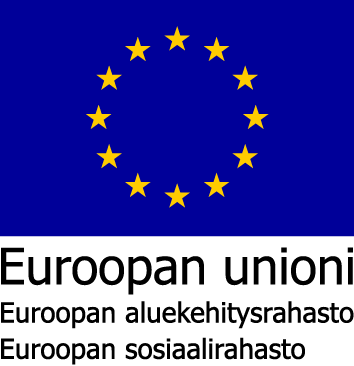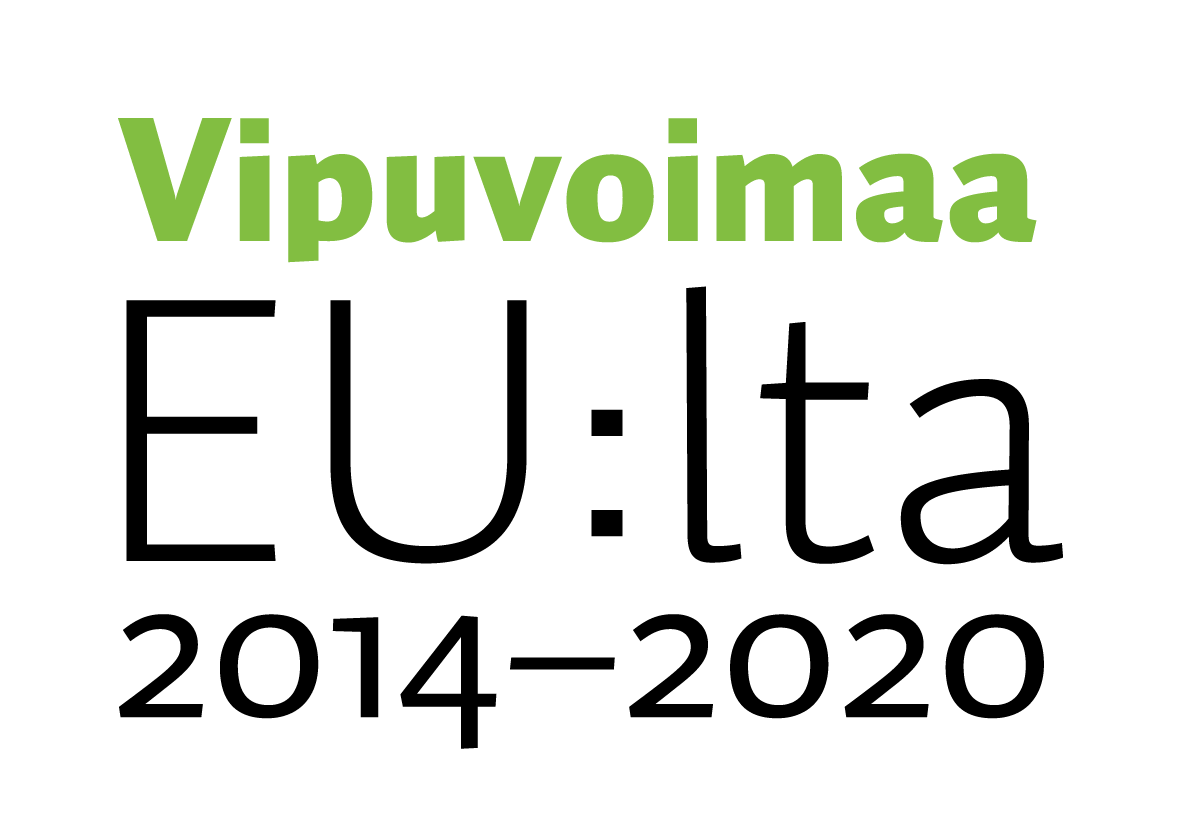

 |
 |
Hankekoodi: S21629
Hankkeen nimi: Osaava lomittaja
Toimintalinja: 3. Työllisyys ja työvoiman liikkuvuus
Erityistavoite: 7.1. Tuottavuuden ja työhyvinvoinnin parantaminen
Suunnitelman mukainen toteutusaika: Alkaa 1.3.2019 ja päättyy 30.5.2020
Toiminnan tila: Toiminta päättynyt
Vastuuviranomainen: Etelä-Savon elinkeino-, liikenne- ja ympäristökeskus
Hakijan virallinen nimi: Nurmeksen kaupunki
Organisaatiotyyppi: Kunta
Y-tunnus: 0207669-0
Jakeluosoite: Kunnantie 1
Puhelinnumero: 0401041001
Postinumero: 75700
Postitoimipaikka: VALTIMO
WWW-osoite: http://www.nurmes.fi
Hankkeen yhteyshenkilön nimi: Erja Pelkonen
Yhteyshenkilön asema hakijaorganisaatiossa: Lomituspalvelupäällikkö
Yhteyshenkilön sähköpostisoite: erja.pelkonen(at)valtimo.fi
Yhteyshenkilön puhelinnumero: 040 104 1014
Hakijoiden lukumäärä tai tuen siirto -menettely:
Nykyaikaisen maatilan tavoitteena on saada mahdollisimman pienillä tuotantopanoksilla irti paras tuotos karjastaan. Tilan antaminen ulkopuolisen ihmisen hoidettavaksi voi olla stressaavaa ja yrittäjä voikin kokea, ettei pääse irtautumaan tilan töistä. Täydennyskoulutuksilla pystytään nostamaan lomittajien osaamisen tasoa, joka tuo varmuutta työskentelyyn ja näin ollen parantaa yrittäjien palveluita sekä lomittajan työllistymismahdollisuuksia.
Riittävän osaavan työvoimaresurssin ylläpitämisellä parannetaan maatalousyritysten toimintaedellytyksiä. Maatalouslomittajien osaamisen kehittäminen digitalisaation mukanaan tuomien muutosten mukaisiksi parantaa maatalouden kilpailukykyä ja lisää lomittajien työllistymismahdollisuuksia maatilojen tarpeiden mukaisiksi. Osaamisen kehittämisellä taataan paremmat työllistymismahdollisuudet, jolloin työntekijälle, jolla on alentunut työkyky, voidaan tarjota vaihtoehtoista työtä.
Lomittajille järjestetään n. 50 koulutuspäivää, jotka on jaettu eri osa-alueisiin. Koulutukset suunnitellaan hanketta hallinnoivasta kunnasta keskitetysti, kuitenkin niin, että koulutuksien paikka on mahdollisimman lähellä niihin osallistuvia lomittajia. Koulutusten järjestäminen kolmen paikallisyksikön (Liperi, Tohmajärvi ja Valtimo) alueella antaa jouston varaa lomittajien työvuorosuunnittelulle. Koulutuspäivien organisoiminen paikallisyksikön lomittajien työvuorolistoille voi olla joskus haastavaa, etenkin vuodenaikoina, jolloin lomittajien kysyntä on korkeimmillaan. Kolmella lomitusalueella järjestyt koulutukset mahdollistavat mahdollisimman monen lomittajan mukaan pääsemisen. Koulutuksia voidaan esimerkiksi striimata, jolloin nekin, jotka eivät muuten pääsisi mukaan, voivat mahdollisesti osallistua etänä.
Hankkeen kohderyhmänä ensisijaisesti ovat pohjois-karjalaiset maatalouslomittajat Liperin, Tohmajärven ja Valtimon paikallisyksiköistä, joiden ammatinhallinta parantuisi ja paikallisyksiköissä hallintohenkilöstön työ helpottuisi. Osaavan maatalouslomittajan työllistäminen luonnollisesti helpompaa. Myös yrittäjien osallistaminen tai mahdollisuus osallistua koulutuksiin olisi tavoiteltavaa. Lomittajien koulutuksen hyötyjinä ovat lopulta pääsiassa maatalousyrittäjät sekä lopulta koko tuotantoketju. Maatalouden nykytilanteessa on erittäin tärkeää, että yrittäjät saavat tauottaa lomiensa avulla työtään. Hyvinvoivat yrittäjät jaksavat ylläpitää tuotantoa ja työllistäväthän he välillisesti usean ammattialan ihmisiä.
Lomittajat voidaan jakaa pienempiin kohderyhmiin osaamisenkehittämisen osalta:
• Digitalisaatiokoulutusta tarvitsevat
• Aikaisemmin hankitun tiedon päivittämistä tarvitsevat
• Syventävää osaamista tarvitsevat
• Työssä tarvittavien koneiden käytön hallinta
• Lomitusyrittäjyydestä kiinnostuneet
Hankkeen välillisenä kohderyhmänä ovat lomituspalveluita käyttävät kotieläintilat. Tilat hyötyvät lomittajien osaamisen kehittymisestä ja toisaalta viljelijät voivat osallistua myös itse joihinkin hankkeen koulutustilaisuuksiin. Tiedon siirron lisäksi yhteisissä koulutustilaisuuksissa voidaan verkostoitua lomittajien kanssa ja keskustella ja jakaa tietoa sekä lomittajien että viljelijöiden tavoitteista ja odotuksista. Hankkeen välillisenä kohderyhmänä ovat myös muta alasta kiinnostuneet, mm. opiskelijat.
Myönnetty EU- ja valtion rahoitus: 104 600
Toteutunut EU- ja valtion rahoitus: 87 509
Suunniteltu julkinen rahoitus yhteensä: 128 021
Toteutunut julkinen rahoitus yhteensä: 108 277
Maakunnat: Pohjois-Karjala
Seutukunnat: Keski-Karjalan, Joensuun, Pielisen Karjalan
Kunnat: Lieksa, Outokumpu, Polvijärvi, Joensuu, Kontiolahti, Liperi, Rääkkylä, Tohmajärvi, Nurmes, Ilomantsi, Juuka, Kitee
Jakeluosoite:
Postinumero:
Postitoimipaikka:
Suunniteltu: 100
Toteutunut seurantatietojen mukaan: 37
Suunniteltu: 250
| Välitön | Välillinen | |
| Ekologinen kestävyys | ||
| Luonnonvarojen käytön kestävyys | 1 | 1 |
| Kestävä kehitys huomioidaan koulutusten sisällöissä | ||
| Ilmastonmuutoksen aiheuttamien riskien vähentäminen | 2 | 3 |
| Kestävä kehitys huomioidaan koulutusten sisällöissä | ||
| Kasvillisuus, eliöt ja luonnon monimuotoisuus | 1 | 1 |
| Kestävä kehitys huomioidaan koulutusten sisällöissä | ||
| Pinta- ja pohjavedet, maaperä sekä ilma (ja kasvihuonekaasujen väheneminen) | 3 | 3 |
| Mm. ruokinnan suunnittelulla voidaan vaikuttaa haittavaikutusten minimointiin. | ||
| Natura 2000 -ohjelman kohteet | 0 | 0 |
| Ei vaikutuksia Naturaan | ||
| Taloudellinen kestävyys | ||
| Materiaalit ja jätteet | 1 | 3 |
| Osaamisen lisääminen parantaa taloudellista kestävyyttä. | ||
| Uusiutuvien energialähteiden käyttö | 1 | 2 |
| Kestävä kehitys huomioidaan koulutusten sisällöissä | ||
| Paikallisen elinkeinorakenteen kestävä kehittäminen | 4 | 5 |
| Maatalous on merkittävä elinkeino maakunnassa, osaamisen lisäämisellä turvataan maatalouden kestävä kehittyminen. | ||
| Aineettomien tuotteiden ja palvelujen kehittäminen | 2 | 4 |
| Mahdollistetaan lomituspalvelujen kehittäminen | ||
| Liikkuminen ja logistiikka | 2 | 4 |
| Huomioidaan työturvallisuuden kehittämisessä | ||
| Sosiaalinen ja kulttuurinen kestävyys sekä yhdenvertaisuus | ||
| Hyvinvoinnin edistäminen | 4 | 5 |
| Hankkeen toimenpiteet edistävät kohderyhmän hyvinvointia. | ||
| Tasa-arvon edistäminen | 0 | 0 |
| Ei tasa-arvovaikutuksia | ||
| Yhteiskunnallinen ja kulttuurinen yhdenvertaisuus | 0 | 0 |
| Ei vaikutusta | ||
| Kulttuuriympäristö | 0 | 0 |
| Ei vaikutusta | ||
| Ympäristöosaaminen | 4 | 5 |
| Koulutukset lisäävät ympäristöosaamista. | ||
Tavoitteena oli vähentää olemassa olevan työvoiman ja lomituksen asiakastilojen välistä kohtaanto-ongelmaa. Hankkeen ensisijaisena kohderyhmänä olivat maatalouslomittajat ja välillisenä viljelijät ja muut alasta kiinnostuneet. Lomittajien osaamisen kehittämisellä pyrittiin lisäämään lomittajien työllistymismahdollisuuksia erityyppisiin maatalousyrityksiin. Maatalouden rakennemuutos on johtanut tilanteeseen, jossa kotieläintenhoitamiseen käytettävä työaika on pienentynyt. Lomittajan on tarvittaessa pystyttävä hoitamaan koko karja yksin. Toisaalta erilaiset tuotannon seurantaan ja ohjaukseen käytettäviä järjestelmiä otetaan käyttöön aiempaa enemmän. Lomittajan on oltava monipuolinen työntekijä.
Hankesuunnitelmaan kirjattujen teemojen perusteella luotiin koulutuskalenteri. Kalenterissa koulutuspäivät jaettiin hankeajalle välttäen maatalouden sesonkiaikoja. Koulutuksia ei järjestetty kesällä, eikä koulujen lomien aikaan. Koulutussisällöt olivat ajankohtaisia ja niiden sisällöt koostuivat pääasiassa aiemmin Pohjois-Karjalassa tehtyjen kyselyjen tuloksien perusteella kerättyihin kehittämistarpeisiin. Koulutuspäiviä järjestettiin yhteensä 44 kappaletta ja niitä pidettiin koko maakunnan alueella. Koulutuksissa tartuttiin lomittajan työn kannalta tärkeisiin asiakokonaisuuksiin. Koulutuspaikkoina toimivat luentosalit ja käytännön päivissä aiheeseen sopivat maatalousyritykset.
Hankkeessa tehdyt toimenpiteet parantavat lomittajien työllistymismahdollisuuksia ja parantaa lomituspalveluja saavien maatalousyrittäjien palveluja. Ammattiosaamisen nosto voi helpottaa myös lomitushallinnon työtä työvuorojensuunnittelun osalta. Koulutuksiin osallistuneet ovat saaneet ajankohtaista tietoa, joka on helppo ottaa osaksi käytännön työskentelyä. Hankkeen myötä täydennyskoulutusten järjestämiseen on saatu uusia näkökulmia. Kohderyhmältä saatu palaute hankkeesta oli pääosin positiivista.